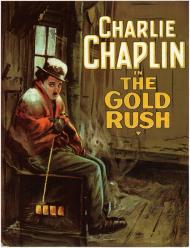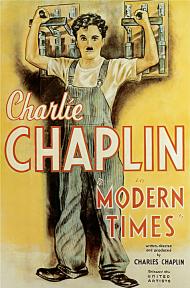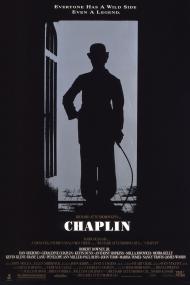Movie Review
City Lights
A comedy romance in pantomime.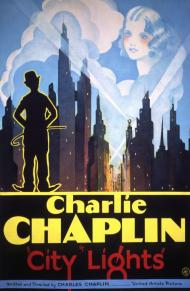
US Release Date: 01-30-1931
Directed by: Charles Chaplin
Starring▸▾
- Charles Chaplin, as
- A Tramp
- Virginia Cherrill, as
- Blind Flower Girl
- Florence Lee, as
- Her Grandmother
- Harry Myers, as
- An Eccentric Millionaire
- Al Ernest Garcia, as
- His Butler
- Hank Mann, as
- A Prizefighter
- T.S. Alexander, as
- Doctor
- Victor Alexander as
- Knocked-out boxer
![4 star[s] out of 4](http://www.threemoviebuffs.com/static/images/global/featured_gold_stars.png)
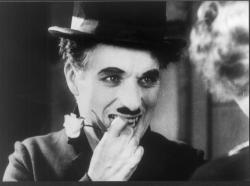
Charlie Chaplin in City Lights.
The films of Charlie Chaplin have been studied and written about more than the films of any other person in cinema history. He has become a mythic figure in the same company with Shakespeare, Beethoven and Van Gogh. It is a complete toss-up between City Lights and The Gold Rush as to which is his greatest movie. They are both so good that choosing between them is as pointless as choosing between 'Hamlet' and 'Macbeth'.
This amazingly talented man wrote, directed, produced, edited, starred in and composed the score for City Lights.
Chaplin fearlessly released this silent movie four years after the advent of sound. So incredibly successful and famous was he that, unlike Keaton and Lloyd (or any other silent star for that matter), he was able to continue making movies on his own terms.
Subtitled 'a comedy romance in pantomime' City Lights tells the story of the Little Tramp and his love for a blind flower girl. When he climbs through a fancy parked automobile to elude a policeman the girl mistakes him for the car's rich owner. Enchanted by her, the Little Tramp decides to play along. Later that evening he saves the life of a suicidal and very drunk millionaire. Thus creating a friendship that enables him to woo the innocent girl without revealing his true identity to her. Unfortunately the millionaire only recognizes the Little Tramp when he is drunk (which is every night it seems) and this sets up many comic opportunities.
One day the Little Tramp learns that the girl and her grandmother are going to be evicted from their home. Having recently been rejected by his now sober benefactor, he tries his hand at several odd-jobs to raise money for the girl's rent. Eventually, he crosses paths with the once-again inebriated millionaire and gets enough money from him to pay for the girl to have corrective surgery on her eyes. Then, due to a misunderstanding, the Little Tram p is accused of stealing from his rich friend and serves time in prison.
Upon his release he meets up with the no-longer-blind flower girl and she finally realizes that her 'rich' suitor is really a homeless tramp. Words cannot do justice to this scene. Celebrated critic James Agee rightfully and quite simply called it "The high point in movies." The look on Chaplin's face as he nervously smiles at the girl will break your heart.
Chaplin once said, "Movies need dialogue as much as great symphonies need lyrics." From anyone else's lips these words are meaningless, but from this silent poet and true movie genius they ring true.
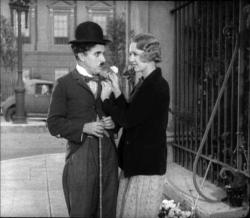
Charlie Chaplin and Virginia Cherrill in City Lights.
Patrick is so naturally infatuated with classic movies that I was quite prepared to find that he had exaggerated this one. And since I'd never actually seen a complete Charlie Chaplin film, I wasn't sure what to expect other than the character of the Little Tramp. What I found was that Patrick was completely correct in his statements and that City Lights is a pure delight.
What starts as pure slapstick comedy ends with the scene that Patrick described, which is surprisingly touching. I expected to laugh at this movie, but I didn't expect to be moved by it. Chaplin is able to get the plot points across so well that he rarely needs to stoop to exposition in the subtitles and without ever exaggerating the acting, the way it was done so often before talkies. This isn't just a movie, it's a work of art.
But it's unpretentious art, that also carries some very funny scenes. I thought the boxing match, which the tramp enters in an attempt to win the blind girl some money, was particularly well done, with hilarious choreography. And there are many such moments throughout the movie's length. I'd never realized before that Bugs Bunny stole so much of his character from Chaplin.
I've never been a big silent movie fan, but maybe that's because I'd never seen one that wouldn't have worked just as well, if not better, with the inclusion of sound. This movie though, would not have worked better; it would actually have lost something.
![4 star[s] out of 4](http://www.threemoviebuffs.com/static/images/global/featured_gold_stars.png)
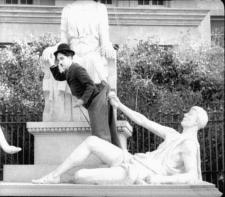
The great Charlie Chaplin.
Chaplin was the greatest of the silent film clowns. Harold Lloyd needed other people and situations to react to, to be funny. Buster Keaton utilized inanimate objects to create comic art. Chaplin did both.
The movie opens with him being accidentally intimate with some statues. He sits on one’s face and gets a sword up his rear. He gets dangerously distracted by a nude statue. He then meets the blind girl, and we see his concern for her.
The movie is first and foremost a comedy. The scene where the millionaire drunk is driving himself, and an inebriated Chaplin home, has a great punch line. He drives erratically over side walks, and in front of cars. Chaplin leans over from the passenger side and says to him, “Be careful how you’re driving.” The drunk driver responds, “Am I driving?”
The look on Chaplin's face at the end of the movie is perfect, but so is the double meaning in the last line of dialogue, spoken by the once blind girl, “Yes, I can see now.”
City Lights is one of the best silent films I have ever seen!
Photos © Copyright Charles Chaplin Productions (1931)


